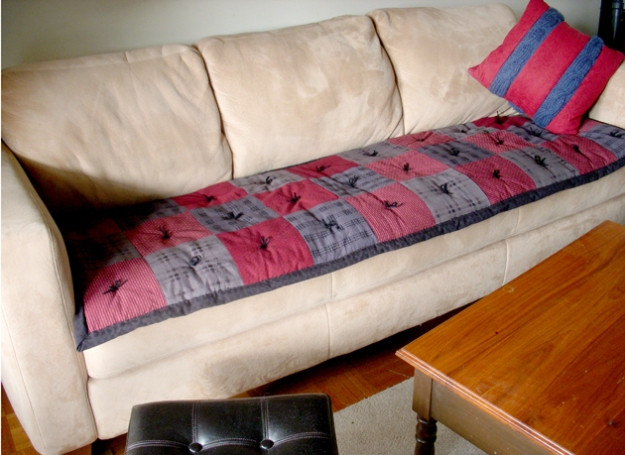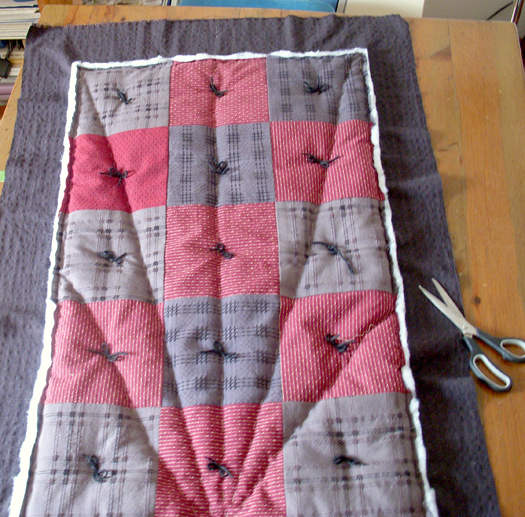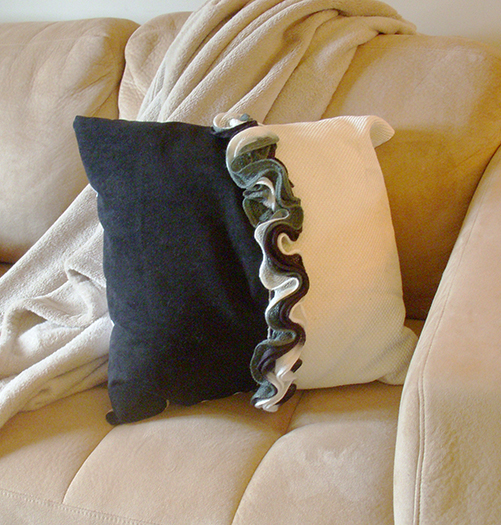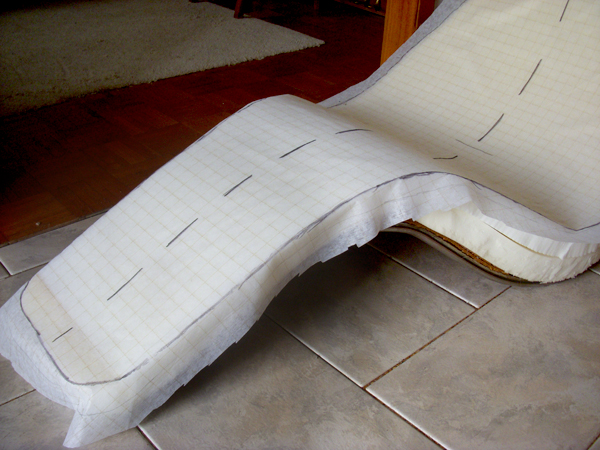
Round is not such a difficult option for a patio table. Really it’s just a matter of trimming your fabric and sewing in a hem … of course, it will be a long hem, but worth the trouble!
Cut a quick circle: Fold twice and draw a curved edge
Fold a big square of fabric in quarters and mark an arc along raw edges from centre point out. You can cut thru all layers at once if the textile is not too thick.

Open up the circle, and hem up with tassel trim. It took 4 yards of trim to get around this 62″ wide tablecloth. I ironed a hem up and pinned the trim all around in place. The first pass of stitching caught the upper edge of trim and the raw edge of fabric. The second pass caught the low (tassel) edge of trim and the fold edge of fabric.
Widen a Narrow Bolt of Fabric with a side panel
In order to get a decent hang-down off my 48″ patio table, I needed to add an 8″ panel to the side of my 54″ blue checked fabric.

I added the panel using a flat fell seam, so both sides looked finished. (The panel is small checks.)
Amount fabric required:
Tablecloth fabric: 2 yds
Tassel Trim: (for 48″ table) – 4 yds
How about a hole for the umbrella?
That will require some sort of a slit and an overlap. Next project.














